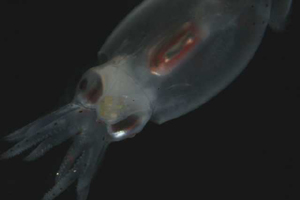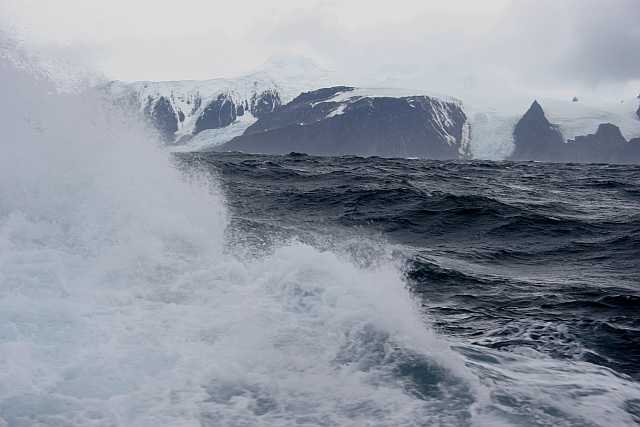| • Home |
| • Questions |
| • Participants |
| • Background Information |
Air Temp: 4.2C
Wind: 20-23
Wind Chill: –12.1C
Water Depth: 4431meters
4’ swell
We performed a plankton tow at 12:30am in which we recovered some Salpa Thompsoni.

| 1 | 2 | 3 | 4 | 5 | 6 | |
| 7 | 8 | 9 | 10 | 11 | 12 | 13 |
| 14 | 15 | 16 | 17 | 18 | 19 | 20 |
| 21 | 22 | 23 | 24 | 25 | 26 | 27 |
| 28 | 29 | 30 |
| 1 | 2 | 3 | 4 | |||
| 5 | 6 | 7 | 8 | 9 | 10 | 11 |
| 12 | 13 | 14 | 15 | 16 | 17 | 18 |
| 19 | 20 | 21 | 22 | 23 | 24 | 25 |
| 26 | 27 | 28 | 29 | 30 | 31 |
This good fortune inspired the salps group to put out the Tucker Trawl to get more! (This is one way the labs work collaboratively …and stay up all night!)
One of the primary PI’s, Rudi Scheltema, has made the following contribution to the Journal. In this he shares with you how his part of the grant partnership (shared with Ken Halanych, Chief Scientist) works in the Cruise Plan. We log the raw field data, and from that Dr. Scheltema will write a report to the National Science Foundation and perhaps a paper at a later date.
“For the past three days we have been crossing Drake Passage, the seaway separating the South American and the Antarctic continents. We have been making collections of drifting planktonic organisms every four hours along a route between Staten and Elephant Islands using a fine meshed net three-quarter meter in diameter at its mouth (ca. 39”). Why do we wish to undertake such a strenuous program? We will explain.
About 100 million years ago during Jurassic and Cretaceous geologic time the single existing super continent named Pangaea became divided into two parts. One, Laurentia, “drifted” by means of plate tectonics to the north forming the continents of the northern hemisphere; the other half, Gondwanaland, moved to the south to form the continents of the southern hemisphere, namely, Africa, Australia, South America and the Antarctic. Then more recently, about 40 million years ago, Antarctica and South America separated to form the Drake Passage which we now cross on our way to the Antarctic continent.
As a consequence of this separation, the marine organisms that live in the waters surrounding the Antarctic continent (in particular the Antarctic Peninsula and South Shetland Islands) have been isolated from South America even longer. So long, in fact, that they have changed significantly and evolved into a new unique “local” fauna, different but related most recently (remember, in geologic time) to that of South America. While the majority of marine bottom dwelling organisms differ from those of South America, some groups (taxa) remain largely unchanged and are found on both the South American and Antarctica continents, including 40 to 50 percent of all mud-dwelling worms and about a third of all echinoderms (meaning “spiny skinned”), which include sea stars and brittle stars. If such species are to remain unchanged they must have had some means to maintain contact with one other, that is, ”to visit” one another. We suggest that this contact may be maintained through the dispersal of their minute larvae passively carried long distances by ocean currents (i.e., they didn’t set out to “swim” there). Such dispersal is similar to that of plant seeds, for example milkweed seeds which may be carried by the wind or “air currents”.
So we will undertake to discover if larvae might not be carried long distances maintaining genetic continuity or relationship, “a visitation of larvae,” or the “wandering babies” like those we have established for tropical oceanic waters. We shall attempt to discover larvae in the Drake Passage and to determine how the “water babies” contribute to the geographic distribution of marine invertebrate bottom-dwelling organisms.”

Dinner Menu (shipboard, 11/30): |
|
Sirloin w/shrimp stuffing, |